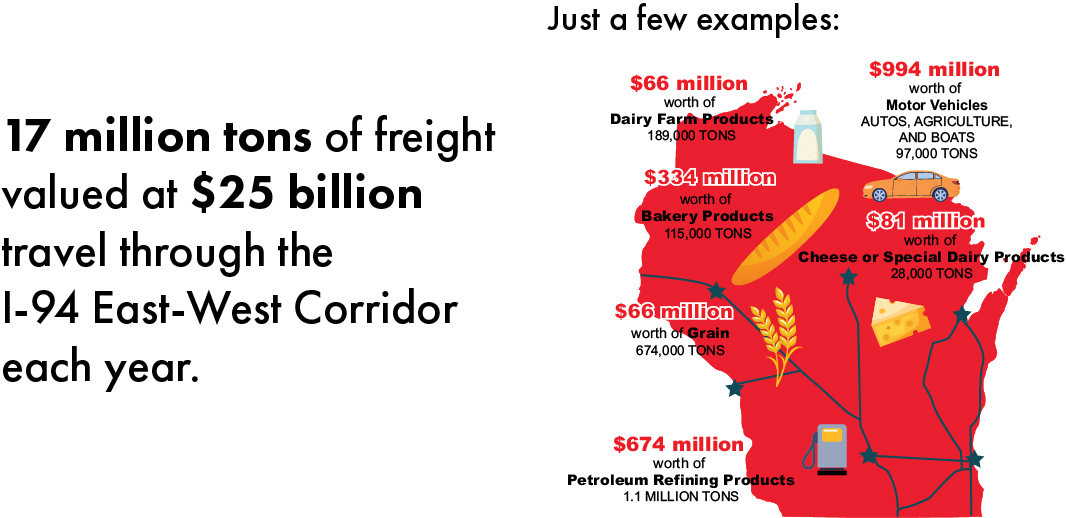The Project
Originally built in the early 1960s and linking the state’s $800 million investment in the Marquette Interchange and $1.6 billion investment in the Zoo Interchange, the I-94 East-West Corridor runs for 3.5 miles between 16th and 70th Streets in Milwaukee County. Twenty-six percent of the people, 27% of the jobs, and 35% of the businesses in the seven-county region are within a five-mile radius corridor’s center. It is a main artery for Wisconsin commerce and serves as the gateway for the products, jobs, destinations, and health care that make the region vibrant and strong, connecting Milwaukee and Waukesha counties to points beyond.

An Aging and Outdated Corridor
However, this critical roadway is at a tipping point as its age and ongoing deterioration create significant congestion, safety, and economic development challenges. The East-West carries between 150,000 and 170,000 vehicles daily, more than its 1950s-era design intended. Left-side ramps, narrow shoulders, short weaving distances, and other outdated features fail to provide safe operating conditions for today’s cars, buses, and large trucks. The average crash rate is two to three times higher than the statewide urban freeway average.
The Project Moving Forward
Reconstruction and modernization of the East-West Corridor have been on the state’s agenda for decades. The Wisconsin Department of Transportation (WisDOT) and the Federal Highway Administration worked diligently to evaluate all options.
The governor and lawmakers finally enumerated the project in the 2021-23 state budget. In March of 2024, the Federal Highway Administration (FHWA) signed the Record of Decision (ROD), confirming federal approval of WisDOT’s recommended alternative for reconstructing I-94 East-West in Milwaukee County as a modernized eight-lane corridor with a diverging diamond interchange to replace the current Stadium Interchange.
WisDOT anticipates construction to start in late 2025.
Project Benefits
- Maximizes the return on the $2.4 billion investment the state and federal governments have made to rebuild the Marquette and Zoo interchanges. Wisconsin motorists will only reap the benefits of these modern interchanges once the primary freeway connecting them is equally efficient and safe.
- Puts a focus on safety. Reconstructed Southeast Freeway System segments have had a reduction in crashes ranging from 29% to 48%.
- Preserves the millions the state has already invested in planning, environmental study, early engineering work, and the consensus built among a broad range of stakeholders.
- Avoids the continual cycle of costly Band-Aid solutions, such as another resurfacing, and addresses aging bridges (overpasses). Most of these structures are original to the Interstate, dating back to the 1960s.
- Supports additional economic development in Milwaukee and Waukesha counties and enhances the region’s efforts to grow. A good transportation network is key to economic growth and job creation and consistently ranks as one of the top criteria among business executives determining desirable commercial investment locations.

